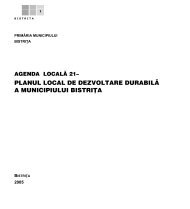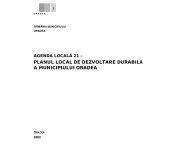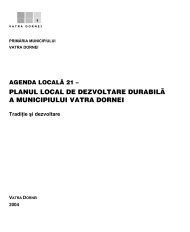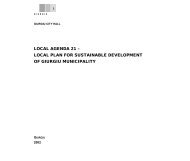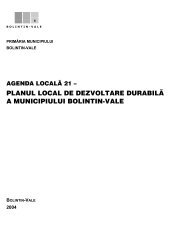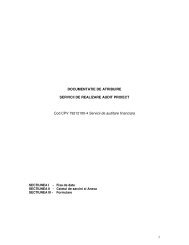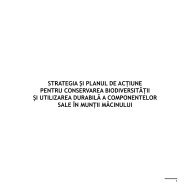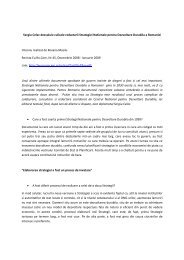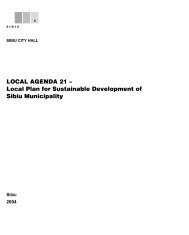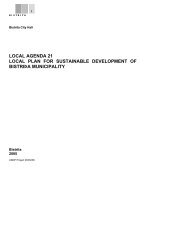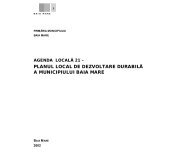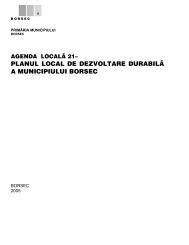English Version - United Nations Development Programme Romania
English Version - United Nations Development Programme Romania
English Version - United Nations Development Programme Romania
Create successful ePaper yourself
Turn your PDF publications into a flip-book with our unique Google optimized e-Paper software.
A spectacular increase in workers' productivity and expertise, seconded by discipline, team spirit,<br />
a sense of duty, and respect for the law.<br />
The progress made in the past few years by some Central and Eastern European countries was<br />
supported, to different degrees, by the same factors, but also by their fast pace introducing reforms and<br />
restructuring.<br />
Unfortunately, <strong>Romania</strong> has not synchronised its macroeconomic and sector policies in order to<br />
create appropriate conditions for a sustainable development.<br />
5.3.2. The strategy for the sustained development of <strong>Romania</strong>'s industrial sector<br />
PREMISES<br />
a) Natural potential and resources for industry<br />
Although the natural potential of resources for industry is not a limiting factor for industrial<br />
development, it represents an element of comparative advantage, which should be taken into<br />
consideration when trying to establish the desired structure of the industrial sector and of sustainable<br />
economic growth.<br />
Mineral resources<br />
More than 120 different substances that could be used in industrial production can be found in<br />
<strong>Romania</strong>'s geological deposits. According to their size, these deposits fall into the following categories:<br />
Deposits that could ensure long -term industrial production, if the demand, the extraction and<br />
processing technologies will allow for profitable gains, given the fact that environmental protection<br />
standards must be also observed. The following deposits fall in this category: coal (for the generation<br />
of energy), copper, lead, zinc and molybdenum minerals, salt, limestone, mineral water, certain<br />
materials used in the glass and ceramics industry and in the production of construction materials. The<br />
low content of useful substances in non-ferrous ores, the high costs of environmental protection, and<br />
the low calorific efficiency of coal are disadvantages that on short and medium term will maintain the<br />
production at the same level in particular sectors like non-ferrous metallurgy and thermal power<br />
production from coal).<br />
Deposits that can ensure productions at the current levels for a limited period of time<br />
(approximately 30 years). Oil and methane gas may serve as examples. Taking into account the fact<br />
that imports are needed in order to meet demands for industrial and power consumption (including<br />
the needs of population). <strong>Romania</strong> has a transport and storage network (which is being developed and<br />
modernised) as well as important capacities for primary and secondary processing. This means that<br />
by increasing the quantity of imports from traditional sources such as the Russian Federation and the<br />
Middle East, as well as the Caspian Sea zone, is possible and feasible. Connection to the West<br />
European gas distribution network could ensure the diversification of sources and make the supply<br />
more secure. The chemical and petrochemical industries should primarily use oil and gas produced in<br />
<strong>Romania</strong> and not imported, since it is of better quality.<br />
Deposits that could only satisfy to a lesser extent the needs of the industry at present or in<br />
future. Over 90% of the required ferrous ores, cooking coal, bauxite, and barite are imported.<br />
Deposits that draw the interest of industry but are used to a small extent because certain<br />
technical and technological problems could not be solved and the processing would have been<br />
unprofitable. Uranium deposits, titanium and zirconium sands, geothermal water, and others fall into<br />
this category.<br />
Vegetal and animal resources<br />
In this sector, <strong>Romania</strong> has significant and diversified resources. If appropriate economic policies<br />
regarding agriculture, fruit growing and animal breeding will be implemented, the present productions<br />
could increase dramatically and have a positive effect on the following industrial sub-sectors:<br />
Food, drink, and tobacco industries (meat and fish products, various kinds of cheese, butter,<br />
margarine, sunflower seed oil, bakery products, sugar and sugar products, vegetable and fruit<br />
preserves, wines, fermented ethyl alcohol, beer, tobacco products, etc.);<br />
Textile and clothing industry (thread, wool, fabric and clothing made of linen, hemp, silk, or in<br />
combination with synthetic fibres);<br />
Leather goods, footwear, and fur industry (sheep, lamb, cattle leather, furs from hunted or farmgrown<br />
animals);<br />
Pharmaceutical products industry (using medicinal plants and extracts from the organs of animals).<br />
Forestry Resources<br />
The present potential of forests can guarantee an annual supply of over 16 million cubic meters of<br />
timber. Most of this can be used for the production of furniture, cellulose and semiprocessed materials<br />
(timber, plywood, veneers, doors and windows, wickerwork, etc.).<br />
44



